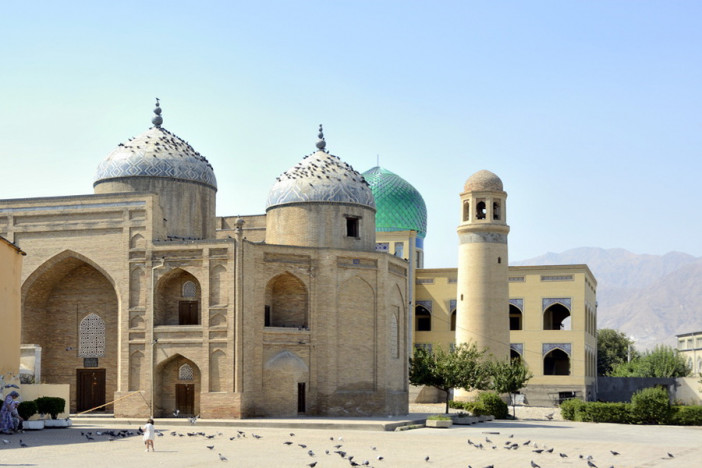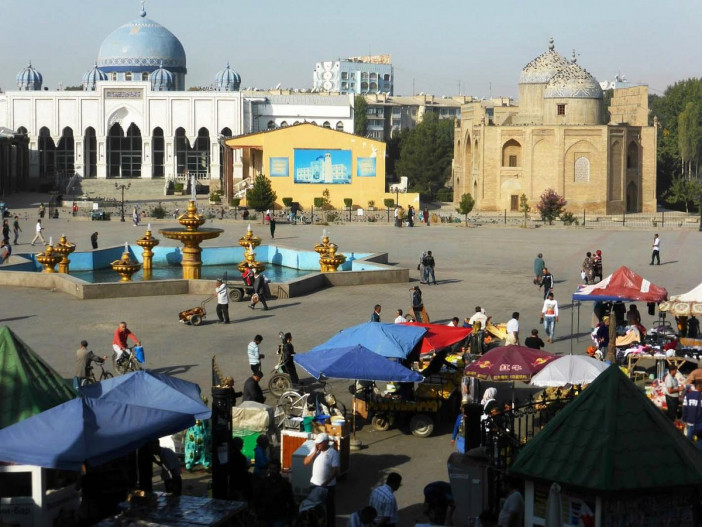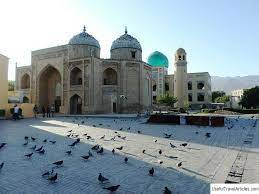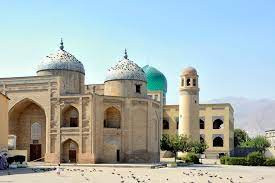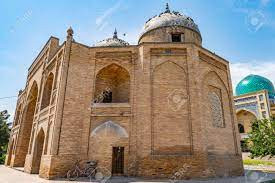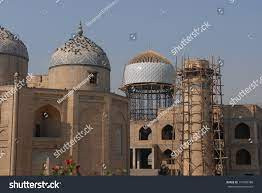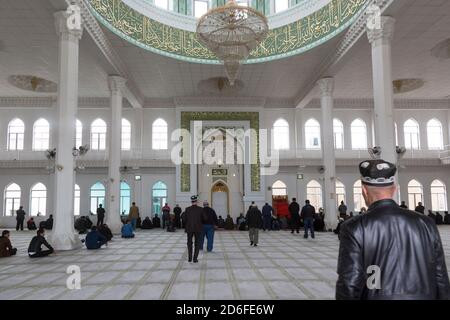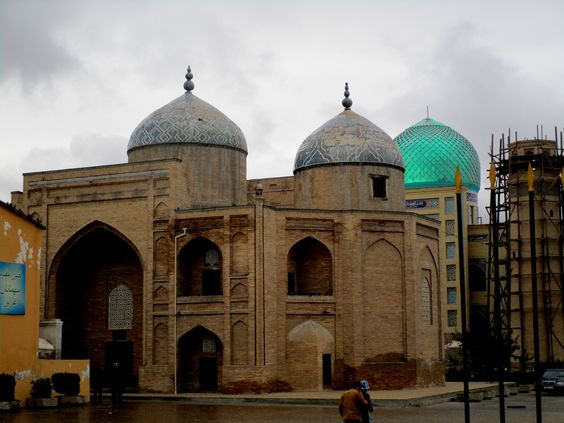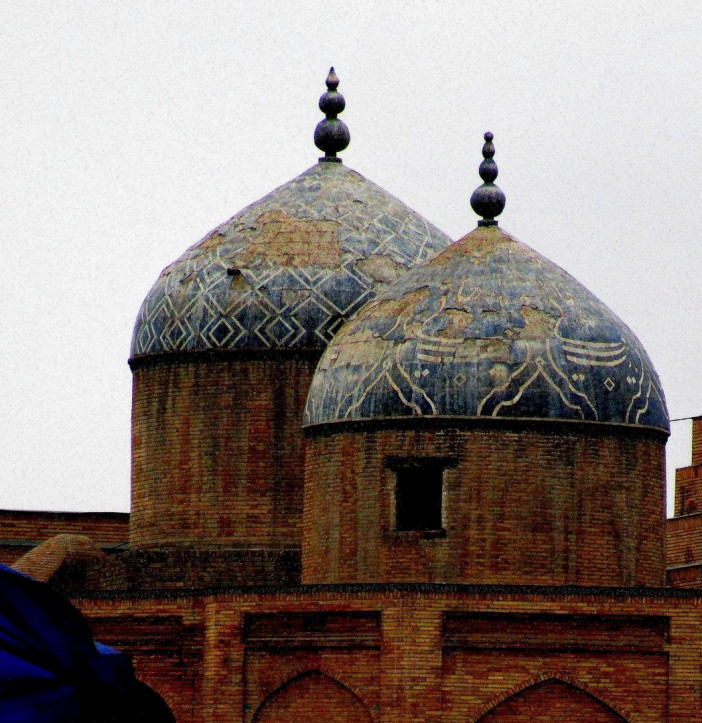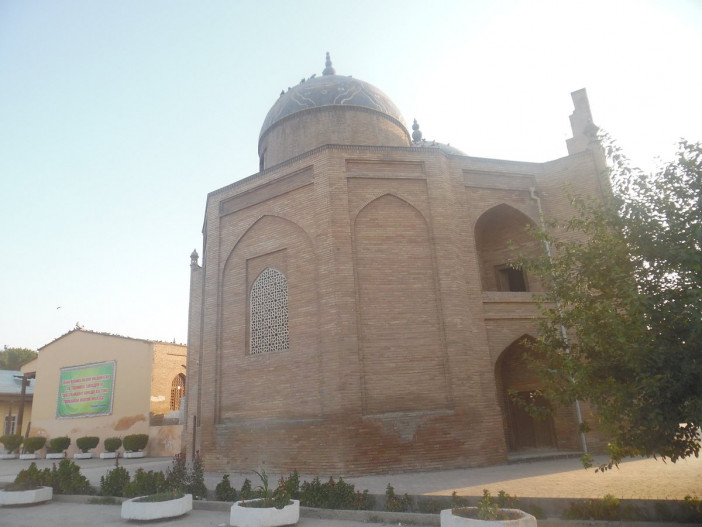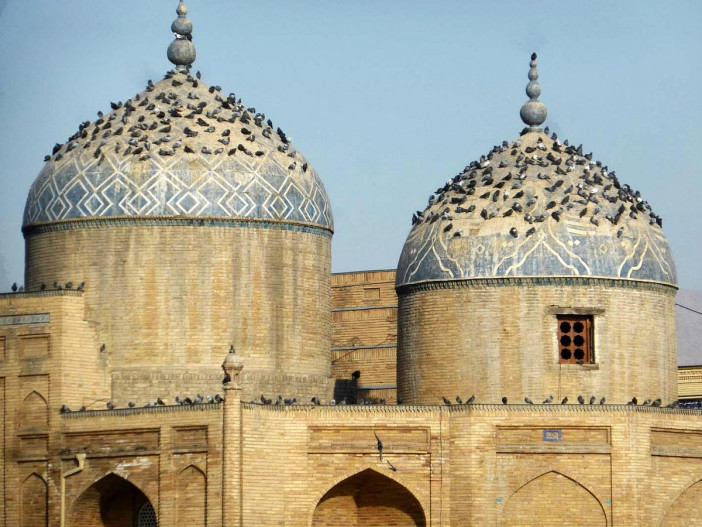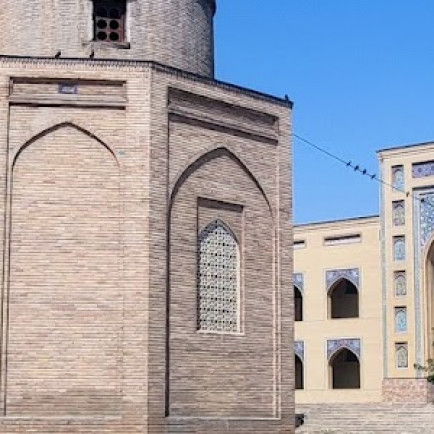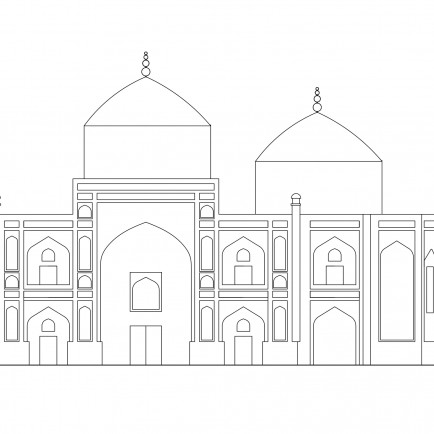Mausoleum of Sheikh Muslihiddin
History
This large memorial complex located in the historical part of the city was erected on the tomb of Muslihiddin Khudjandi - the ruler of Khujand, a poet who lived in the 12th century. The legends say that sheikh Muslihiddin was a holy miracle-maker. First he was buried in Undzhi settlement (Khujand suburb) but his admirers transferred his remains to the city and built the mausoleum on this place. It was in the 12th century. Back then the mausoleum was a small burial chamber made of burned bricks decorated by terracotta. This tomb was destroyed during Mongol invasion.
In the 14th century the mausoleum was rebuilt with slight changes. It consisted of two rooms. But this building was also destroyed. In the 16th century and you building was erected on what was left of the old mausoleum. Structurally it differed from former structures and became not just the burial site but also the place for prays and ceremonial ceremonials. Today the Mausoleum of Sheikh Muslihiddin is an architectural complex consisting of the cathedral mosque, the 19th-century minaret (above 20m tall) and ancient burials with the Mausoleum of sheikh Muslihiddin being the main one. The present mausoleum is two-storied with the portal entrance and the wide dome. In the center is ziyoratkhona (the hall of commemoration) and the tomb-gurkhona under the dome. In the center of the room there is a wooden sagona covered with graceful geometrical carving with vegetative ornament and incrustations.
Urban and Architectural
The mausoleum itself is a two-storied domed skylight construction with a central cross-shaped ziroyatkhana (commemoration hall) and domical gurkhona (burial-vault). In the centre of the construction there is a carved wooden headstone - (sagona), covered with a thin, geometric carving filled with ornaments and inlaid gems.
Directly across the street from the complex, on the other side of the square, there is one of the largest covered markets in Central Asia - Panjshanbe. The market building is decorated in national style.
Description
The bazaar is open every day from early morning to late evening; here you can buy almost any fruit or vegetable grown in Tajikistan. It is always possible to have delicious and inexpensive courses of national cuisine in any one of the numerous teahouses and cafes around the market.
Nearby stands Minaret. In the middle of the northern part of town, a few dozen meters from the Syr Darya river, near the modern city park of culture and leisure. Kamola Khujandi is a fortress built around VII - VIII centuries A.D.
The fortress covered an area approximately 300 x 200 m, and was surrounded by powerful cob wall. Later it was destroyed, but at the beginning of XVIII century was partially restored.
Currently, the fortress houses the Museum of Archaeology and Fortification. It is known that in the XVIII century. Khujand was surrounded by a wall, it is now partially preserved in the western and eastern limits of the modern city.
Once the total length of the walls was about 6 km, up to now remained of them little more than one kilometer.
References
https://www.advantour.com/tajikistan/khujand/mausoleum-sheikh-muslihiddin.htm. https://silkadv.com/en/content/muslikhiddin-mausoleum
Details
الموقع
Sughd region, Khujand, Central part of the city, next to Panjshanbe bazaar, 246 Jura Zokirov St. Tajikistan
تاريخ البناء
12th century
Area
6000
الرسومات المعمارية
الخريطة
History
This large memorial complex located in the historical part of the city was erected on the tomb of Muslihiddin Khudjandi - the ruler of Khujand, a poet who lived in the 12th century. The legends say that sheikh Muslihiddin was a holy miracle-maker. First he was buried in Undzhi settlement (Khujand suburb) but his admirers transferred his remains to the city and built the mausoleum on this place. It was in the 12th century. Back then the mausoleum was a small burial chamber made of burned bricks decorated by terracotta. This tomb was destroyed during Mongol invasion.
In the 14th century the mausoleum was rebuilt with slight changes. It consisted of two rooms. But this building was also destroyed. In the 16th century and you building was erected on what was left of the old mausoleum. Structurally it differed from former structures and became not just the burial site but also the place for prays and ceremonial ceremonials. Today the Mausoleum of Sheikh Muslihiddin is an architectural complex consisting of the cathedral mosque, the 19th-century minaret (above 20m tall) and ancient burials with the Mausoleum of sheikh Muslihiddin being the main one. The present mausoleum is two-storied with the portal entrance and the wide dome. In the center is ziyoratkhona (the hall of commemoration) and the tomb-gurkhona under the dome. In the center of the room there is a wooden sagona covered with graceful geometrical carving with vegetative ornament and incrustations.
Urban and Architectural
The mausoleum itself is a two-storied domed skylight construction with a central cross-shaped ziroyatkhana (commemoration hall) and domical gurkhona (burial-vault). In the centre of the construction there is a carved wooden headstone - (sagona), covered with a thin, geometric carving filled with ornaments and inlaid gems.
Directly across the street from the complex, on the other side of the square, there is one of the largest covered markets in Central Asia - Panjshanbe. The market building is decorated in national style.
Description
The bazaar is open every day from early morning to late evening; here you can buy almost any fruit or vegetable grown in Tajikistan. It is always possible to have delicious and inexpensive courses of national cuisine in any one of the numerous teahouses and cafes around the market.
Nearby stands Minaret. In the middle of the northern part of town, a few dozen meters from the Syr Darya river, near the modern city park of culture and leisure. Kamola Khujandi is a fortress built around VII - VIII centuries A.D.
The fortress covered an area approximately 300 x 200 m, and was surrounded by powerful cob wall. Later it was destroyed, but at the beginning of XVIII century was partially restored.
Currently, the fortress houses the Museum of Archaeology and Fortification. It is known that in the XVIII century. Khujand was surrounded by a wall, it is now partially preserved in the western and eastern limits of the modern city.
Once the total length of the walls was about 6 km, up to now remained of them little more than one kilometer.


